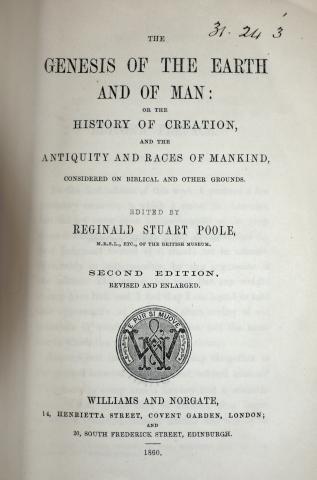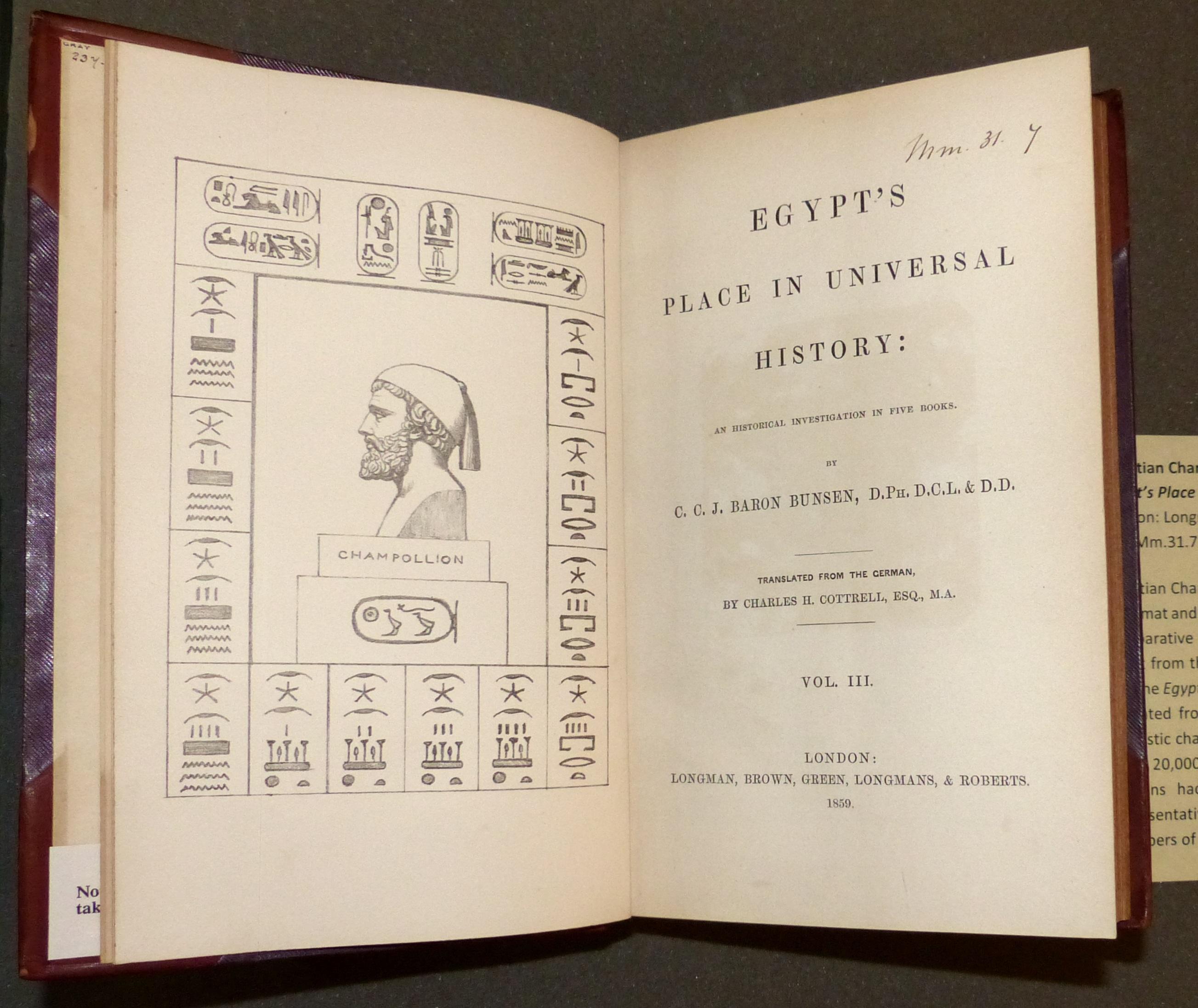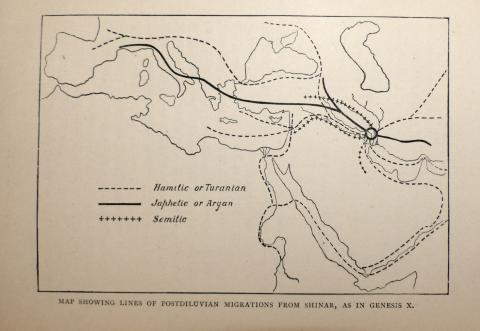After the successful decipherment of hieroglyphs in 1822, the second half of the century saw new tensions between scriptural, classical, and ancient Egyptian sources. Philologists struggled to reconcile these texts with new archaeological and geological evidences for human antiquity. Most scholars followed two dominant historical models. The first was the biblical chronology that relied on Bishop James Ussher’s creation date of 4004 BCE. The second was the pharaonic dynastic chronology proposed by the classical-Egyptian writer Manetho (3rd century BCE). One problematic implication from Manetho’s dynasties was that humans lived in Egypt before the Pharaohs. No consensus existed on how to investigate a civilisation without historical records. Moreover, the divisive question arose about how Egyptians achieved a high degree of civilisation in a relatively short period of time. Ancient Egypt was thus hotly debated. Monogenists believed that all humans were one species, sharing common ancestors in Adam and Eve. Polygenists alternatively argued that there were multiple origins for the human species. Many relied on biblical, classical, and Egyptian chronologies to support their theories.

Published anonymously by Orientalist Edward William Lane (1801-1876) and edited by his nephew Egyptologist Reginald Stuart Poole (1832-1895), this book was a key example of polygenist pre-adamism. Pre-Adamite theories proposed that some ‘primitive’ populations—commonly prehistoric Egyptians—predated Adam and Eve. Lane and Poole argued that there were two distinct human sources for linguistic traditions: a civilized Caucasian race descended from Adam and a barbarous pre-Adamite race that had produced the crude flint tools that were being increasingly collected by fieldworkers. The pre-Adamites had originated in the Nile Valley and spread throughout Africa and Asia. Lane and Poole used pre-Adamite polygenism to harmonize archaeology, anthropology, philology, and geology with Genesis. Their book was especially praised by polygenist members of the Anthropological Society of London, established in 1863.

Christian Charles Josias von Bunsen (1790-1860) was a Prussian protestant diplomat and scholar in Britain, a proponent of German biblical criticism and comparative philology, and one of the most influential writers on ancient Egypt from the 1840s through 1860s. His most divisive work was the five-volume Egypt’s Place in Universal History, which argued that ancient people migrated from East to West and brought languages with them. Tracing linguistic changes and diffusion, Bunsen’s third volume concluded humans were 20,000 years old and agreed with Leonard Horner that ‘civilized’ humans had been in Egypt for about 14,000 years. His book was representative of monogenism and was particularly praised by monogenist members of the Ethnological Society of London.
John William Dawson (1820-1899) was a Canadian geologist, creationist, and populariser of science who had been educated at the University of Edinburgh. He advocated a type of monogenism that endorsed scriptural chronology, stemming from his belief that geology and the Bible were complementary. Dawson wrote many works on early Egyptian history including his penultimate book above. He attempted to show that ‘antedeluvian’ people once migrated from ancient Mesopotamia (modern Iraq) as far as Europe before the biblical flood wiped them out. Afterwards some of Noah’s grandchildren (specifically the ‘Hamitic tribe’) migrated to Egypt, giving rise to Pharaonic civilisation. Dawson consequently argued that Egypt had no prehistoric period. His argument negated the gradual linear process of cultural evolution from ‘savage’ to civilised’ and instead suggested that all humans had been civilised since the moment of creation. This map shows ‘postdiluvian’ migrations throughout the ancient Near East.
